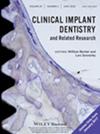Predicting Implant Failure and Complications Using Cluster Analysis After Variable Selection: A Retrospective Study
Abstract
Background
Uneven data distribution (due to rare outcomes) and repeated measurements (from multiple implants per patient) hinder the creation of a precise oral implant failure risk model.
Purpose
The aim of this study was to explore variable selection methods suitable for oral implant data, assess risk factors of early failure and postoperative complications, and apply the two-step cluster analysis to establish a risk prediction model for oral implant failure, providing a reference for clinical practice.
Materials and Methods
This study was a retrospective analysis, with early failure and postoperative complications serving as the outcome indicators. Given the repeated measurements and uneven distribution in oral implant data, our study conducted a comparative analysis between GEE and GEE with Firth penalization. This study evaluated the influencing factors screened by a more suitable model and utilized them for subsequent risk prediction. A two-step cluster analysis was applied to identify different subgroups of early failure and postoperative complications; their clinical characteristics were compared, and relevant risk prediction models were developed.
Results
Among a total of 677 patients and 1200 implants, 21 implants were lost prior to loading, and postoperative complications occurred in 74 patients involving 94 implants. The GEE model with Firth's penalty term indicated that non-submerged healing (p < 0.001), shorter implant length (p < 0.001), and thinner diameter (p = 0.007) were risk factors for early failure. The GEE model showed that non-submerged healing (p = 0.039) was a protective factor against postoperative complications, whereas unhealed extraction sockets at the implant site (p = 0.048), the use of bone substitutes (p = 0.008), and a history of periodontal disease (p = 0.009) were risk factors. Additionally, the use of bovine tendon-derived absorbable biomembranes (p = 0.036) may elevate the risk of postoperative complications. The two-step cluster analysis identified two patient subgroups, categorized as high-risk and low-risk, and the prediction model demonstrated good discrimination ability.
Conclusions
Early failure data were highly imbalanced, and the incorporation of the Firth penalty term provided significant benefits. However, its effectiveness in managing postoperative complication data remained limited. Thus, a one-size-fits-all approach to variable screening may not have suited all types of imbalanced data. The analysis conducted in this study, using specific screening techniques, yielded more reliable influencing factors. Additionally, the developed two-step clustering model was capable of predicting high-risk patients for early failures and postoperative complications before surgery, aiding clinicians in devising personalized preventive measures to reduce incidence rates.
Trial Registration: Clinical trial registration number: ChiCTR2300070420

 求助内容:
求助内容: 应助结果提醒方式:
应助结果提醒方式:


